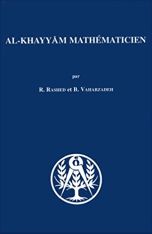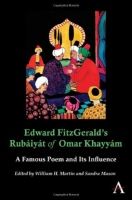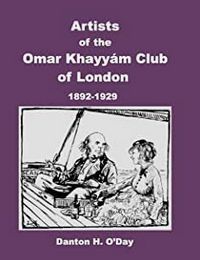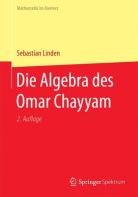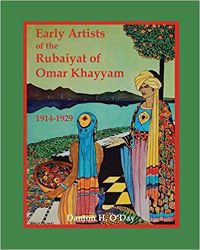Omar Khayyam, the astronomer-poet of Persia. Cowell, Edward Byles. Calcutta Review, (1858), 59, pp. 149-162.
Archives
Al-Khayyám mathématicien
Al-Khayyám mathématicien. Rashed, R. et B. Vahabzadeh. Paris, Librairie Scientifique et technique A. Blanchard, 1999. x, 428 p. ISBN: 2853672107
Summary:
Personnage de légende, ‘Umar al-Khayyam (1048-1131) est aussi un mathématicien novateur et un éminent philosophe. Il fut le premier à concevoir la géométrie algébrique, développée par son successeur Sharaf al-Din al-Tùsi puis, six siècles plus tard, par Descartes et Fermat. Critique de la théorie des parallèles d’Euclide aussi bien que de sa théorie des proportions, il imprègne l’histoire de ces théories, et inspire les mathématiciens jusqu’à Wallis et Saccheri. Dans ce livre sont pour la première fois réunis tous les écrits mathématiques d’al-Khayyàm, scientifiquement établis et rigoureusement traduits ; ils sont précédés des commentaires historiques et mathématiques nécessaires à l’intelligence de leur auteur, et qui placeront son œuvre dans l’histoire des mathématiques.
Edward FitzGerald’s Rubáiyát of Omar Khayyám. A famous poem and its influence
Edward FitzGerald’s Rubáiyát of Omar Khayyám. A famous poem and its influence. Edited by William H. Martin and Sandra Mason. London; New York; Delhi, Anthem press, 2011. xi, 170 p. ISBN: 9780857287700.
An index to Ambrose George Potter’s Bibliography of the Rubaiyat of Omar Khayyam
An index to Ambrose George Potter’s Bibliography of the Rubaiyat of Omar Khayyam compiled by Douglas Taylor. With a provisional biography of Potter compiled by Bob Forrest. [S.l., s.n.], 2016. 39 p.
An edition of 25 copies printed for distribution at the Rubaiyat Research Day in Cambridge on July 9th 2016.
Artists of the Omar Khayyám Club of London 1892 to 1929
Artists of the Omar Khayyám Club of London 1892 to 1929. Danton O’Day. Emeritus Press, 2017. 86 p. ISBN: 9781389917240
Summary:
This book documents the menu artists of the Omar Khayyam Club of London from 1892-1929.
While 26 artists were credited in the two books of the Club, there actually were 28 different menu artists. Of these several were not properly credited for their contributions. For example, one artist was credited for three pictures that belonged to two other artists. Another incorrectly attributed picture was done by an, as yet, unidentified artist. This book details these issues as well as providing many other insights, firsts and interesting facts:
-First complete documentation of the artists of the Omar Khayyam Club of London Menus, 1892-1929
-First time most of the pictures have been seen since their initial publication
-Discovery of numerous incorrect artist credits
-Discovery of an “Unidentified Artist”
-Recognition of artists who were not credited for their contributions
-Corrected lists and timelines of artists and their contributions
-Learn about the artists: a cartoonist, a spy, the man who developed camouflage and more…
Die Algebra des Omar Chayyam
Die Algebra des Omar Chayyam. Sebastian Linden. 1. Auflage. München, Ed. Avicenna, 2012. ISBN: 9783662553473
Summary:
This book explains the historical achievements of Omar Khayyam and the societal and scientific conditions that he encountered. Not only for the math experts but also for students and laymen. Not only Khayyam’s scientific works are discussed but Linden also gives a historical introduction about al-Khayyam’s life and work, both as mathematician and poet
Early artists of the Rubaiyat of Omar Khayyam, 1914-1929
Early artists of the Rubaiyat of Omar Khayyam, 1914-1929. Danton O’Day. Emeritus Press, 2018. iv, 141 p. ISBN: 9781388734190.
Summary:
This intensely illustrated book focuses on the era from 1914-1929 that followed the Golden Age of Rubáiyát Art, 1884-1913. It reveals the work of 16 illustrators who produced two or more pictures to illustrate the poems and 9 other artists who embellished the poetry with page decorations, title page adornments and unique frontispiece images.
In these pages, the identity of a previously anonymous artist is revealed. New decorators are discovered. Tables and graphic timelines put all the work into perspective as multiple images—many published here for the first time in 90-100 years—reveal the often-unparalleled talent of artists who took their pens, inks and paints to the task of illustrating FitzGerald’s Rubáiyát.
